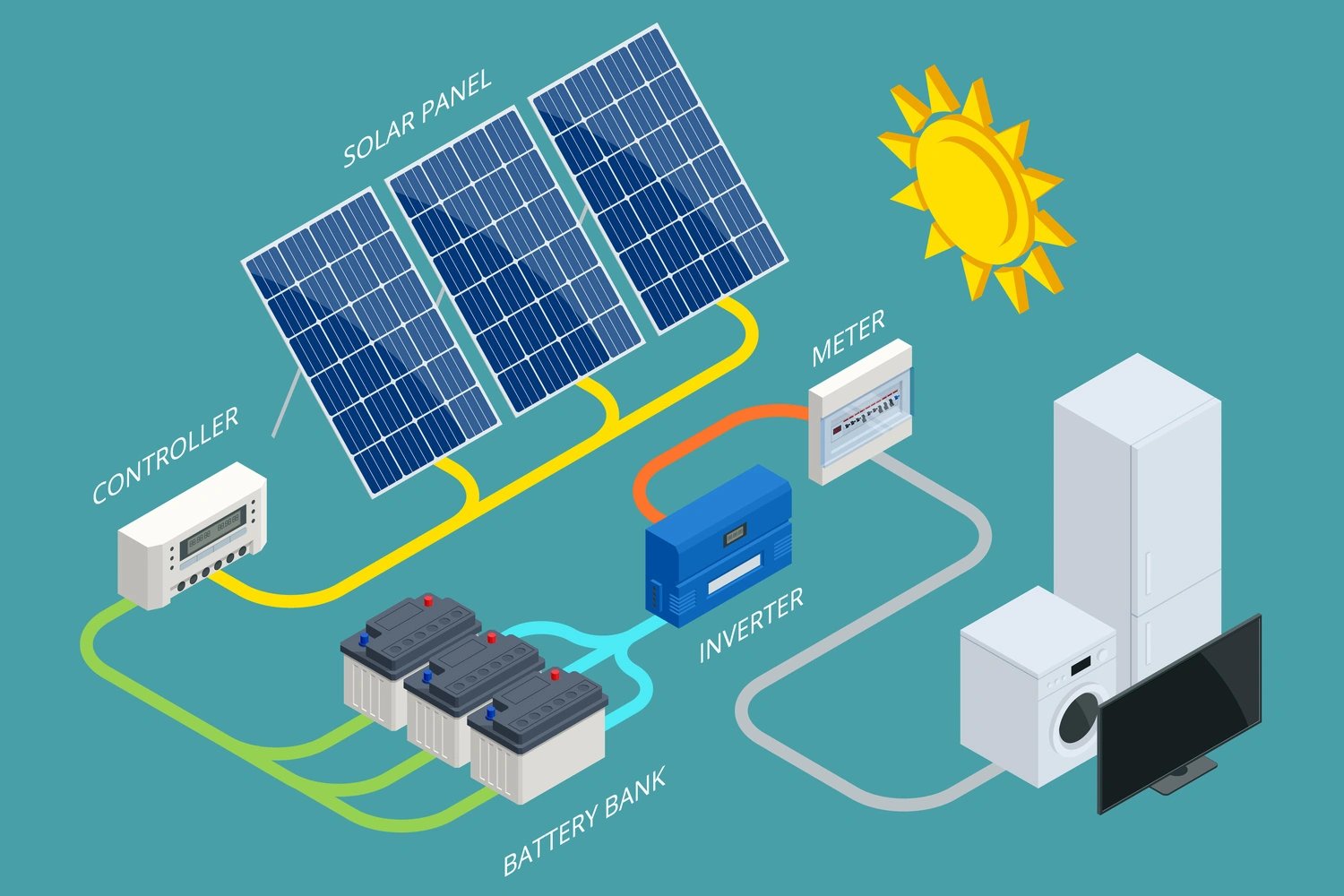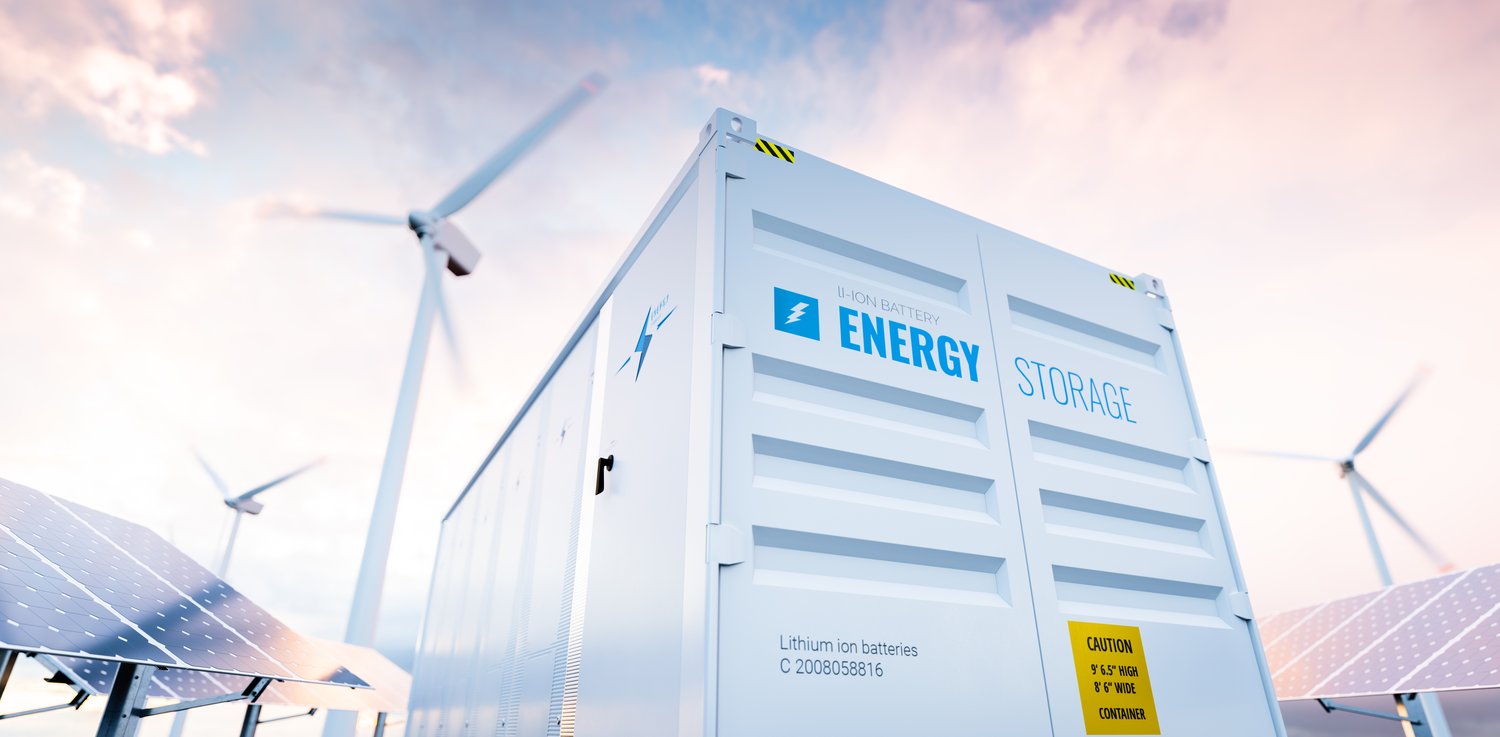Battery Storage Basics
Free Permitting Checklist
Practical Tips to Avoid Environmental Risk on all Your Projects
Download our environmental permitting checklist to get a step-by-step list of ways to protect your project from the 9 most common environmental risks.
Download Your Checklist
What Are Battery Energy Storage Systems (BESS)?
Battery energy storage systems (BESS) are rechargeable power stations that store electricity from the electric grid or solar arrays and redistribute that power on a consumer or industrial level.
These batteries are behind-the-meter batteries and in-front-of-the-meter batteries. In front of the meter, batteries connect to a generator or transmission or distribution lines. These are large-scale batteries that are important for load relief and ancillary services. Behind-the-meter batteries connect to industrial, commercial, or residential meters. These batteries can be a cost-effective option that aims to manage electricity bills and practice "peak shaving."
.webp?width=1500&height=750&name=AdobeStock_248626760%20(1).webp)
How Does Battery Storage Work?
BESS uses battery modules, control components, inverters, and onboard sensors. The materials outside the battery differentiate the system as a power system rather than simply a battery.
The battery collects a power plant's or the grid's energy and ejects this stored energy at a future time to provide electricity. Many of these systems use algorithms to determine the expected use soon and the amount of energy needed to keep. This process is accomplished vis these automated control systems and a built-in inverter.
The sensors in the system monitor potential dangers, such as rising temperatures, to ensure the system's safety. The control components allow the system to require little involvement from operators.
Similarly, a standalone battery can be connected to the electric grid or battery bank and store power directly there rather than directly at the energy production source.
Various types of batteries are currently on the market. The exact battery type will dictate what materials, scale, use, and mechanics the system requires.
How Energy Storage Applies to Utility-Scale Renewable Energy
Utility-scale batteries play a significant role in the future of renewable energy. These batteries can have a storage capacity from several mega-watts to hundreds of hours. Batteries support renewable energy systems by increasing the system's flexibility to optimize these energy resources. Batteries accomplish this flexibility by absorbing, holding, and ejecting electrical energy created by renewable energy sources.
Solar Energy
Solar energy is an excellent example of fluctuating energy sources that benefit from energy storage. Solar panels receive varying amounts of light throughout the day and varying amounts between each day. This variance is due to changes in seasons, weather patterns, blockages, or a need to be cleaned. Typically, high electricity usage (the evening) peaks at a different time than solar energy generation does (midday to afternoon.) Due to this, the ability to take energy at the peak of its absorption on a panel and store it for a time when it is in high demand allows us to meet energy needs without wasting and generating more solar energy.
Free Permitting Checklist
Practical Tips to Avoid Environmental Risk on all Your Projects
Download our environmental permitting checklist to get a step-by-step list of ways to protect your project from the 9 most common environmental risks.
Types of Battery Technology
Various types of battery technologies have been created over the years. These battery types vary in land requirements, power supply in terms of megawatt-hours, and cost.
Lithium-Ion Batteries
Lithium-ion batteries are comprised of a singular contained battery in which conductors and electrolytes mix to discharge and charge the battery. This system yields a relatively brief lifespan and cannot wholly release its stored energy before it needs replenishing. Lithium-ion batteries can sustain an energy supply for about two hours, followed by a rapid recharge process. These batteries last up to eight years as the materials degrade and should be cycled daily.
This battery holds a significant share of the battery storage industry. Though the focus on electric vehicles (EVs) has led to a decline in lithium-ion technology development, this type of battery technology is the most mature and present battery storage system. This battery type can be applied to the power grid.

Lead Acid Batteries
This battery uses the chemical reactions of sulfuric acid, water, and lead to store energy. Lead-acid batteries have a lead and antimony metal plate with a negative charge (anode), a water and sulfuric acid mixture (electrolyte), and a lead dioxide positively-charged plate (cathode). The plates begin to produce electricity when placed in the mixture. This battery design has existed for roughly 160 years but is still used due to this inexpensive, durable, and reliable design.
Deep cycle batteries are plastic composite, rectangular boxes that do not provide instantaneous power like those in homes. They are ideal for solar power energy storage due to this gradual approach to power deployment and their ability to be connected to make a battery bank with a higher energy density. Wiring boxes can increase the battery voltage together to support expected solar storage.
Flow Batteries
Flow batteries are comprised of two tanks sharing a membrane and electrochemical cells. Fluid, commonly iron or vanadium, is passed between these tanks, and the cells generate electricity. The amount of energy production is directly proportionally related to the tank size. These batteries are promising options for microgrids, utility uses, and electric vehicles. These batteries can supply energy for 10 hours, making them a preferred choice for these operations. Additionally, the ability to "recharge" or replace the fluid makes them ideal for electric vehicles.
This battery is a competitor to the lithium-ion battery but is the most expensive due to the larger area required to support the pumps of the system and their longer charging period. For up to 30 years, flow batteries can be cycled every day. These batteries also have a nearly infinite cycle life due to their lack of phase-to-phase chemical reactions. These batteries are considered incredibly environmentally friendly, safe due to their lack of flammable materials, and land-consuming due to their system requirements.
Other Energy Storage Technology
Compressed Air Energy Storage
Compressed air energy storage is a system that uses stored thermal energy as power. Like batteries, compressed air energy storage systems (CAES) store energy. However, this energy is generated from ambient air or other gases. This air is then compressed within a tank and then stored underground. This air is heated and expanded via natural gas or other fuel when needed. Recent findings are seeing this system as a better investment than lithium-ion batteries due to the system's low cost, roundtrip efficiency, and high energy return.
Flywheel Storage
This energy storage system consists of a rotating shaft connected to a heavy wheel. This wheel turns faster as more energy is expended. The wheel can be attached to a generator that slows the wheel down and produces electricity with electromagnetism. Though power can be made, it cannot be stored in significant amounts, as seen in batteries.

Energy Storage Solutions and the Clean Energy Transition
We will introduce many new clean energy storage technologies as we aim to lower our carbon emissions and leave fossil fuels behind. Battery energy storage systems are the future of the clean energy transition. This technology can provide ramp control, regulation reserves, and frequency regulation in a relatively cost-effective and durable way. According to research, batteries are expected to save $2.03 million in U.S. fuel costs and decrease fossil fuels by 97%. Additionally, these batteries can be attached to generations to lower costs in various communities and provide clean power to less accessible, lower-income communities.
A BESS requires less land, upkeep, and money than anticipated, making clean energy goals a closer reality. Batteries have an advantage over technologies, such as hydro power, that have geographic limitations in distributing their energy. In the example of hydro technologies, individuals must plan around additional transport and preparation time to use this energy source.
This easy accessibility, lack of need for extensive transport, rechargeable, long life cycle, and ability to store energy make them a front runner for a preferred energy system. Their stored energy capacity is helpful in the event of power outages and daily use. These batteries can provide energy on days with little sun and wind. This reliability limits the number of barriers to reaching our net-zero goals.
Though hopeful, many are still left with questions about batteries' role in our future. Could batteries power the grid? Only time will tell what cleantech will be most valuable for reaching our goals. As current research and innovations are trending, batteries will be at least one of the heroes of the energy transition.
Free Permitting Checklist
Practical Tips to Avoid Environmental Risk on all Your Projects
Download our environmental permitting checklist to get a step-by-step list of ways to protect your project from the 9 most common environmental risks.

